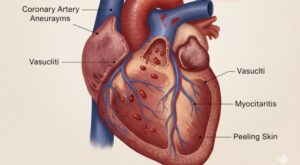Understanding Divided Attention in Conversations: Why We Don’t Always Listen Fully

In today’s fast-paced, screen-dominated world, conversations are often interrupted, fragmented, or held in parallel with scrolling, clicking, or multitasking. Have you ever spoken to someone only to realize they weren’t really “there”? That’s a classic example of divided attention at work.
Divided attention is a cognitive process where a person focuses on more than one task or stimulus at the same time. While our brain is capable of managing multiple streams of input, it comes at a cost — particularly in communication and relationship quality.
What Is Divided Attention?
Divided attention, also referred to as multitasking, is the mental ability to allocate cognitive resources between tasks simultaneously. It’s different from selective attention (focusing on one thing and ignoring the rest) and sustained attention (concentration on one task over time).
Scientific Insight:
According to a landmark study by Rubinstein, Meyer, and Evans (2001), multitasking reduces efficiency and performance because the brain can only focus effectively on one thing at a time. When we try to do more, we switch rapidly between tasks, leading to attention residue — a lag in cognitive processing between tasks.
How Divided Attention Affects Conversation
- Reduced Emotional Connection
Eye contact, tone of voice, and body language are essential for emotional resonance. When you’re partially engaged, you miss subtle cues, reducing empathy and trust. - Poor Retention of Information
Studies show that multitasking reduces working memory capacity. This means people often forget what was said just moments ago. - Miscommunication and Conflict
When you’re not fully present, responses can seem irrelevant or insensitive, sparking misunderstandings and even relationship strain. - Lowered Social Satisfaction
Both the speaker and listener feel dissatisfied when conversations are shallow or distracted. It can lead to feelings of neglect, especially in close relationships.
Neuroscience Behind It
The prefrontal cortex, responsible for decision-making and attention, gets taxed when juggling tasks. MRI studies have shown that when switching between tasks, brain activity in this region drops temporarily — meaning comprehension and empathy dip significantly when multitasking during conversations (Just et al., 2008).
The Role of Technology in Divided Attention
Mobile phones, smartwatches, and background notifications fragment our attention. Research from the University of Texas found that just the presence of a smartphone on the table, even when not in use, significantly reduces cognitive performance and engagement in conversations.
How to Improve Focus in Conversations
- Practice Active Listening
Maintain eye contact, nod, paraphrase what the other person said, and ask relevant follow-up questions. - Silence Digital Distractions
Turn off notifications or put devices away during important talks. - Mindfulness Techniques
Deep breathing and grounding yourself in the moment can improve attentiveness. - Set Intentions
Before entering a conversation, set a mental intention to be present. - Use the “Two-Minute Rule”
If a conversation is short, dedicate full attention for those two minutes. You’ll be surprised how deep the connection feels.
Divided Attention and Mental Health
Constant multitasking and surface-level interactions can contribute to mental fatigue, loneliness, and burnout. Fulfilling conversations, on the other hand, boost oxytocin and serotonin, promoting emotional well-being.
In an era of hyperconnectivity, true presence is a rare gift. Recognizing and addressing divided attention in conversations not only improves communication but also nurtures deeper, more authentic relationships. Whether with family, friends, or colleagues, being fully present can be the most healing form of self-care and respect you offer.
References :
1. Multitasking: Switching costs
2. The effects of divided attention on implicit and explicit memory performance
3. Cognitive control in media multitaskers
4.Control of goal-directed and stimulus-driven attention in the brain




